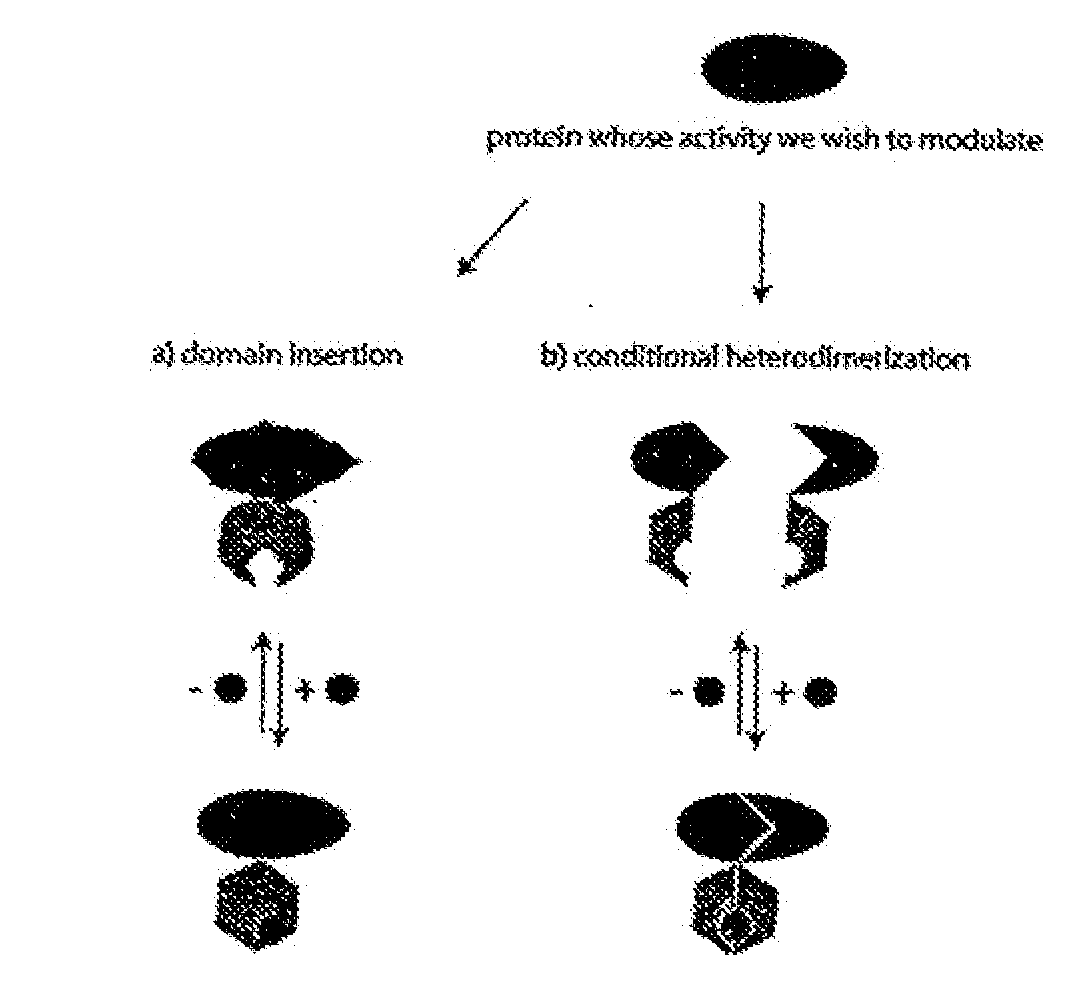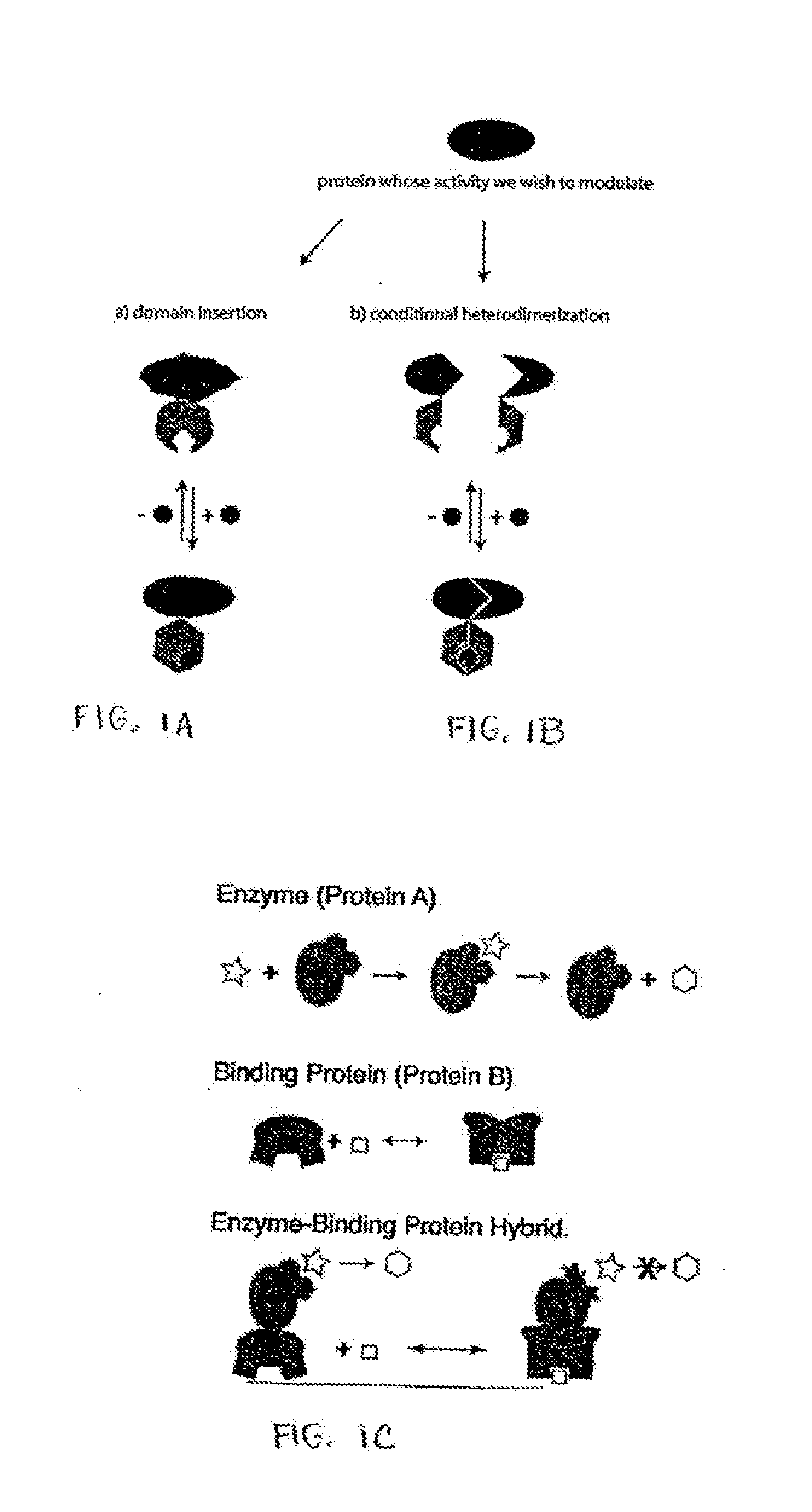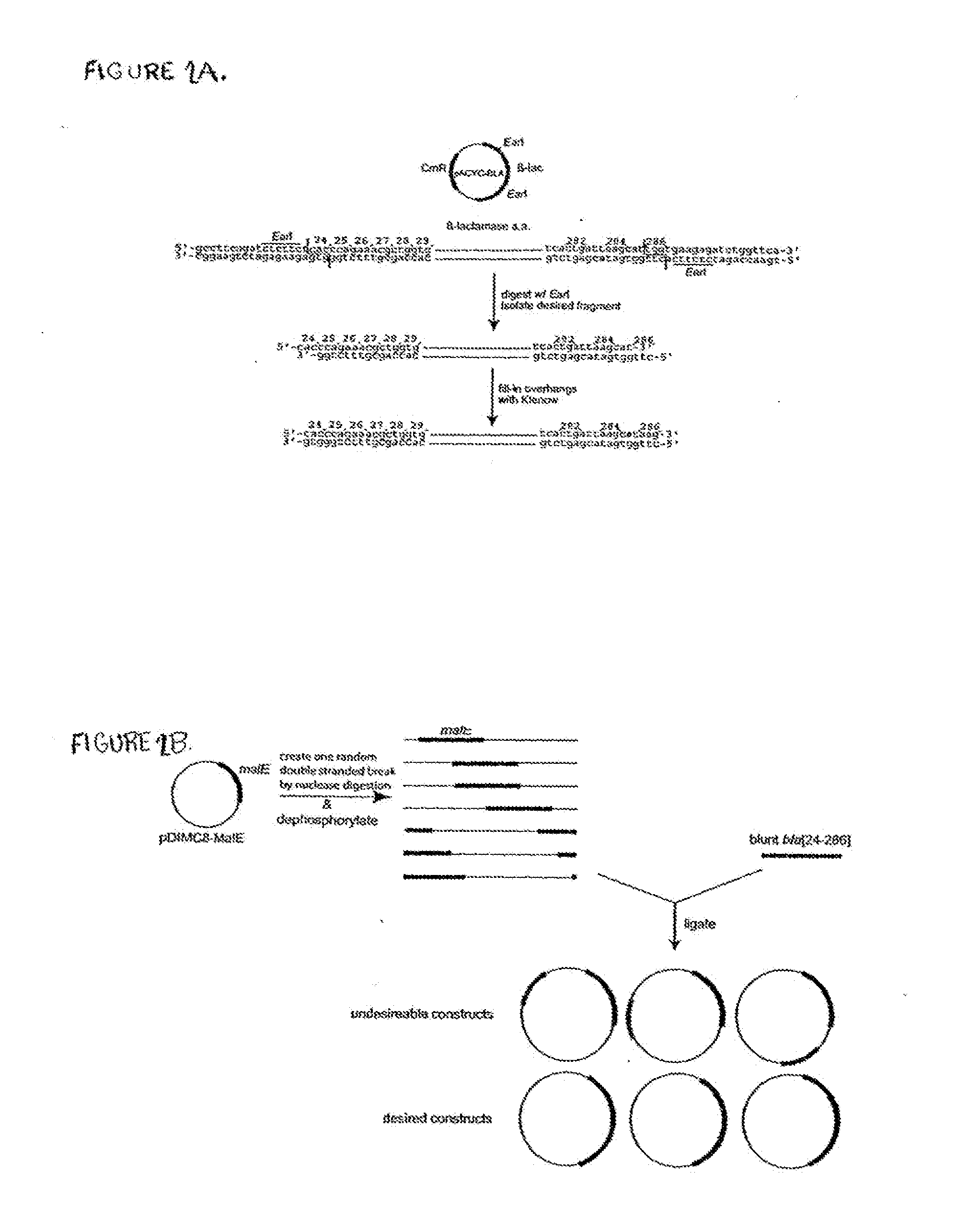Molecular switches and methods for making and using the same
a technology of molecular switches and molecules, applied in the field of fusion molecules, can solve the problems that the aggregate population of molecules may not be able to mediate the function, and achieve the effect of increasing the number of types of effusions
- Summary
- Abstract
- Description
- Claims
- Application Information
AI Technical Summary
Benefits of technology
Problems solved by technology
Method used
Image
Examples
example 1
Generating Fusion Molecules by Domain Insertion
[0192]A model system consisting of E. coli maltose binding protein (“MBP”) as the acceptor polypeptide sequence and the penicillin-hydrolyzing enzyme TEM1 β-lactamase as the insertion polypeptide sequence was chosen to test the combinatorial domain insertion strategy for coupling the two proteins' function. The desired property of the model switch is the ability to modulate β-lactamase activity through changes in maltose concentration (i.e., the switch molecule or fusion protein would behave as an allosteric enzyme).
Construction and Testing of Target Plasmid
[0193]The E. coli MSB was cloned into plasmid pDIMC8 (Ostermeier and Benkovic, 1999, Nat Biotechnol. 17:1205-1209) under control of the IPTG inducible lac promoter to create plasmid pDIMCS-Mal. The MIC for ampicillin of DH5α / pDIMC8-Mal on LB plates was found to be 30-35 μg / ml.
Construction of β-Lactamase Insert DNA
[0194]The β-lactamase gene fragment bla [24-286] (encoding for amino ac...
example 2
MBP:GFP Fusions
[0223]Maltose Binding Protein (MBP) and GFP fission molecules are generated essentially as described above.
Selection of Active Fusions: GFP-MBP
[0224]E. coli cells expressing GFP can be sorted based on fluorescence and other parameters using flow cytometry (Daughtery, et al., 2000, Proc. Natl. Acad. Sci. USA 97: 2029-34). Initially, E. coli cells expressing GFP-MBP fusions library are screened to identify cells with significant: green fluorescence and which grown in the presence of maltose (provided in both in the growth medium and during the sorting process) as well to identify cells that have significant green fluorescence without maltose (absent in both the growth medium and during the sorting process). Cells selected are re-cultured and cells are sorted for the absence of, or a decrease in, fluorescence under the opposite condition (e.g., in the absence of maltose where cells were previously grown in the presence of maltose, and in the presence of maltose where cel...
example 3
Generation of Conditional Heterodimers
[0226]As a model system, control over the neomycin -resistance protein (Neo) (aminoglycoside phosphotransferase APH(3′)-IIa), by conditional heterodimerization is engineered. Incremental truncation libraries of fragments of Neo are used to identify bisection locations in Neo that do not abolish activity by selection on plates that contain kanamycin.
Design of Overlapping Fragments of Neo
[0227]To avoid the possibility of individual fragments of Neo being active on their own, the starting fragments for incremental truncation are designed such that they lack essential residues for functionality because they are already N-terminally of C-terminally truncated. The seven classes of APHs have very little general sequence homology (Wright, 1999, Front Biosci. 4: D9-21). However, a sequence alignment of representative members of each class, combined with the known functions of residues in APH(3′)-IIIa (Wright and Thompson, 1999, Front Biosci. 4: D9-21) su...
PUM
| Property | Measurement | Unit |
|---|---|---|
| temperature | aaaaa | aaaaa |
| nucleic acid | aaaaa | aaaaa |
| alkaline phosphatase activity | aaaaa | aaaaa |
Abstract
Description
Claims
Application Information
 Login to View More
Login to View More - R&D
- Intellectual Property
- Life Sciences
- Materials
- Tech Scout
- Unparalleled Data Quality
- Higher Quality Content
- 60% Fewer Hallucinations
Browse by: Latest US Patents, China's latest patents, Technical Efficacy Thesaurus, Application Domain, Technology Topic, Popular Technical Reports.
© 2025 PatSnap. All rights reserved.Legal|Privacy policy|Modern Slavery Act Transparency Statement|Sitemap|About US| Contact US: help@patsnap.com



